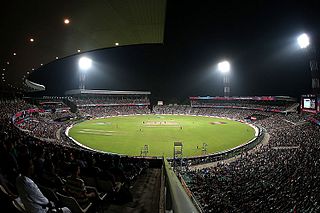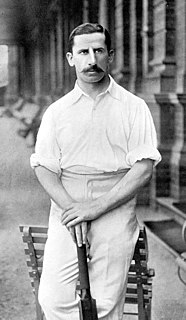| Personal information | |||||||||||||||||||||||||||
|---|---|---|---|---|---|---|---|---|---|---|---|---|---|---|---|---|---|---|---|---|---|---|---|---|---|---|---|
| Full name | Joseph Deeley Chatterton | ||||||||||||||||||||||||||
| Born | 14 February 1867 Thornsett, Derbyshire, England | ||||||||||||||||||||||||||
| Died | 17 November 1886 (aged 19) Derby, England | ||||||||||||||||||||||||||
| Batting | Right-handed batsman | ||||||||||||||||||||||||||
| Bowling | Right-arm slow bowler | ||||||||||||||||||||||||||
| Relations | William Chatterton | ||||||||||||||||||||||||||
| Domestic team information | |||||||||||||||||||||||||||
| Years | Team | ||||||||||||||||||||||||||
| 1994–1886 | Derbyshire | ||||||||||||||||||||||||||
| First-class debut | 28 July 1884 Derbyshire v Sussex | ||||||||||||||||||||||||||
| Last First-class | 26 August 1886 Derbyshire v Yorkshire | ||||||||||||||||||||||||||
| Career statistics | |||||||||||||||||||||||||||
| |||||||||||||||||||||||||||
Joseph Deeley Chatterton (14 February 1867 – 17 November 1886) was an English cricketer who played for Derbyshire between 1884 and 1886.

Cricket is a bat-and-ball game played between two teams of eleven players on a field at the centre of which is a 20-metre (22-yard) pitch with a wicket at each end, each comprising two bails balanced on three stumps. The batting side scores runs by striking the ball bowled at the wicket with the bat, while the bowling and fielding side tries to prevent this and dismiss each player. Means of dismissal include being bowled, when the ball hits the stumps and dislodges the bails, and by the fielding side catching the ball after it is hit by the bat, but before it hits the ground. When ten players have been dismissed, the innings ends and the teams swap roles. The game is adjudicated by two umpires, aided by a third umpire and match referee in international matches. They communicate with two off-field scorers who record the match's statistical information.

Derbyshire County Cricket Club is one of eighteen first-class county clubs within the domestic cricket structure of England and Wales. It represents the historic county of Derbyshire. Its limited overs team is called the Derbyshire Falcons in reference to the famous peregrine falcon which nests on the Derby Cathedral. Founded in 1870, the club held first-class status from its first match in 1871 until 1887. Because of poor performances and lack of fixtures in some seasons, Derbyshire then lost its status for seven seasons until it was invited into the County Championship in 1895. Derbyshire is also classified as a List A team since the beginning of limited overs cricket in 1963; and classified as a senior Twenty20 team since 2003. In recent years the club has enjoyed record attendances with over 24,000 people watching their home Twenty20 fixtures in 2017 – a record for a single campaign. The local derby versus Yorkshire at Chesterfield now regularly sells out in advance.
Chatterton was born in Thornsett, the son of David Chatterton, a cotton mill fireman, and his wife Hannah. [1]
Chatterton made his debut for Derbyshire in the 1884 season at the age of 17 against Sussex, when he made a duck in both innings. He played two matches in the 1885 season and in the 1886 season played eight first-class and two other matches for Derbyshire.
Derbyshire County Cricket Club in 1884 represents the cricket season when the English club Derbyshire had been playing for thirteen years. They lost all ten county matches and their only victory was against MCC. Partly in response to this the club created as an offshoot the football club Derby County F.C. in 1884.

Sussex County Cricket Club is the oldest of eighteen first-class county clubs within the domestic cricket structure of England and Wales. It represents the historic county of Sussex. Its limited overs team is called the Sussex Sharks. The club was founded in 1839 as a successor to the various Sussex county cricket teams, including the old Brighton Cricket Club, which had been representative of the county of Sussex as a whole since the 1720s. The club has always held first-class status. Sussex have competed in the County Championship since the official start of the competition in 1890 and have played in every top-level domestic cricket competition in England.
In cricket, a duck is a batsman's dismissal for a score of zero.
Chatterton was a right-handed batsman and played 22 innings in 11 first-class matches with an average of 5.40 and a top score of 21. He was a right-arm slow bowler and took 5 wickets for an average of 23.80. [2]
Chatterton died in Derby at the age of 19 years. His brother, William, over five years his senior, was a former Derbyshire captain and one-time England Test cricketer.

William Chatterton was an English cricketer and footballer. He played first-class cricket for Derbyshire between 1882 and 1902 and for England in 1891/2. He captained Derbyshire between 1887 and 1889 and scored over 10,000 runs in his first-class career as well as taking over 200 wickets. He played football for Derby County, being one of 19 sportsmen to achieve the Derbyshire Double of playing cricket for Derbyshire and football for Derby County.



